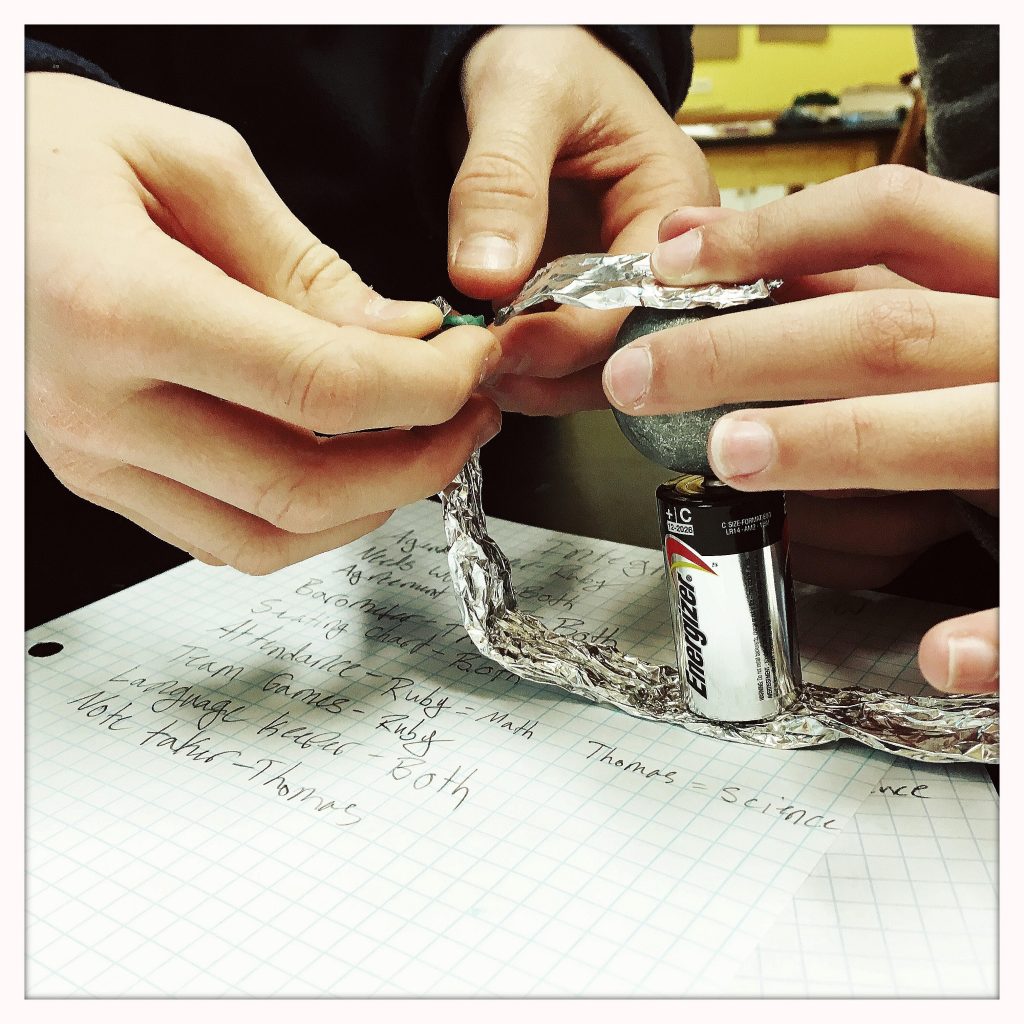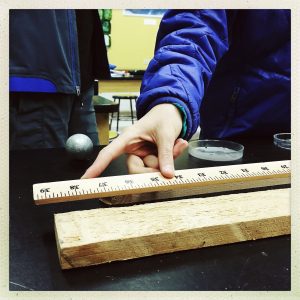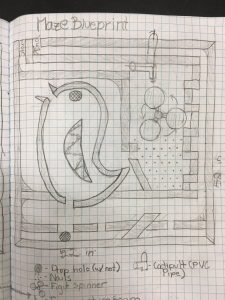Hyla Stories
A Maze of Social and Academic Learning

Academic and social learning in math class
Each year at Hyla, the 6th grade class embarks on the maze project: a major math and engineering study that takes students through all different phases of the engineering design cycle. Students sketch, blueprint to scale, develop functional prototypes, and then build their final products. To appreciate the scale of these mazes, imagine the metal ball labyrinth toys you played with as a child. Now expand that to a wooden version that’s 4 ft x 4 ft. Unlike the simple twists and dead ends in the toy version, the student versions involve complex mechanisms to interact with the ball as it rolls along. Each phase of this projects offers its own opportunities for academic and also social learning. Take a look at a few of those moments:
As creative ideas come to students, they are encouraged to pursue them.  The top picture captures a student-driven investigation into how electricity works as they try to create an electric gate in their maze design. They are experimenting to see if they can get a lead ball to light up a circuit as it passes by, thus allowing the current from the battery to pass through the ball’s light.
The top picture captures a student-driven investigation into how electricity works as they try to create an electric gate in their maze design. They are experimenting to see if they can get a lead ball to light up a circuit as it passes by, thus allowing the current from the battery to pass through the ball’s light.
In the next picture students are involved in a team building process that requires them to create a blueprint from an existing design. Learning precision, measurement, and clarity, students practice working with blueprints by reverse designing something that they can interact with.
This finished blueprint was created by a 3-student team and is ready to  take to the prototype level. It is an example of collaboration, learning to navigate difficult conversations among team members, and eventual success through patience.
take to the prototype level. It is an example of collaboration, learning to navigate difficult conversations among team members, and eventual success through patience.
